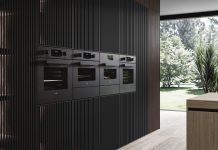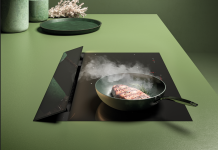 The survey carried out in Italy by Legambiente in collaboration with the Citizen Defence Movement has given not reassuring results about the reliability of energy labels. 5 product types were analysed in the research (TV, refrigerators, wine coolers, electrical ovens and conditioners) and four types of stores: the big surfaces for the furniture sale, hypermarkets with a corner for household appliances, big specialized surfaces and online stores. The research has highlighted that, out of a total of 2,522 products, 30% of the products examined in physical stores is not correctly labelled. More serious the situation for online shops, where only 10% of products – or slightly more – report energy information exhaustively and correctly. Refrigerators, freezers and electrical ovens are the products almost systematically sold with the label, while TV sets, wine cellars and conditioners have a much lower labelling level and this depends on the store. Wine cellars have been chosen because linked with an icon product for Italy like wine, and to have in the array a product that refers to a not strictly domestic consumption. The conditioner boasts, instead, the higher diffusion trend of the last years, responsible, in fact, for the highest summer consumption peaks (which correspond to the highest yearly consumption peaks). Concerning the non-conformity typologies found, the research points out that the main non-conformities of sales in shops mainly regard the bad label positioning, often placed in blind spots or at more than two metres of height, making the reading difficult or sometimes impossible. It is then possible to come across photocopied labels, hand- or computer-written by the shop personnel. On the contrary, other labels, instead of explaining the contents, confuse consumers. Concerning online shops, the irregularities highlighted by research are different, being different the modalities of communicating the label content. In online shops, where it is bigger the quantity of products without label than physical ones, we notice however a frequent dispersion of the base information on more pages, with some notices immediately available close to the product image, others available on the same page but lower, others easily found with a click in a technical card, others still with a “characteristics” card. We met, then, cases of scarce information, like for instance the only energy class, but without the annual consumption, or without the noise datum, wherever required, or without performance coefficients (SCOP/SEER) for conditioners.
The survey carried out in Italy by Legambiente in collaboration with the Citizen Defence Movement has given not reassuring results about the reliability of energy labels. 5 product types were analysed in the research (TV, refrigerators, wine coolers, electrical ovens and conditioners) and four types of stores: the big surfaces for the furniture sale, hypermarkets with a corner for household appliances, big specialized surfaces and online stores. The research has highlighted that, out of a total of 2,522 products, 30% of the products examined in physical stores is not correctly labelled. More serious the situation for online shops, where only 10% of products – or slightly more – report energy information exhaustively and correctly. Refrigerators, freezers and electrical ovens are the products almost systematically sold with the label, while TV sets, wine cellars and conditioners have a much lower labelling level and this depends on the store. Wine cellars have been chosen because linked with an icon product for Italy like wine, and to have in the array a product that refers to a not strictly domestic consumption. The conditioner boasts, instead, the higher diffusion trend of the last years, responsible, in fact, for the highest summer consumption peaks (which correspond to the highest yearly consumption peaks). Concerning the non-conformity typologies found, the research points out that the main non-conformities of sales in shops mainly regard the bad label positioning, often placed in blind spots or at more than two metres of height, making the reading difficult or sometimes impossible. It is then possible to come across photocopied labels, hand- or computer-written by the shop personnel. On the contrary, other labels, instead of explaining the contents, confuse consumers. Concerning online shops, the irregularities highlighted by research are different, being different the modalities of communicating the label content. In online shops, where it is bigger the quantity of products without label than physical ones, we notice however a frequent dispersion of the base information on more pages, with some notices immediately available close to the product image, others available on the same page but lower, others easily found with a click in a technical card, others still with a “characteristics” card. We met, then, cases of scarce information, like for instance the only energy class, but without the annual consumption, or without the noise datum, wherever required, or without performance coefficients (SCOP/SEER) for conditioners.




